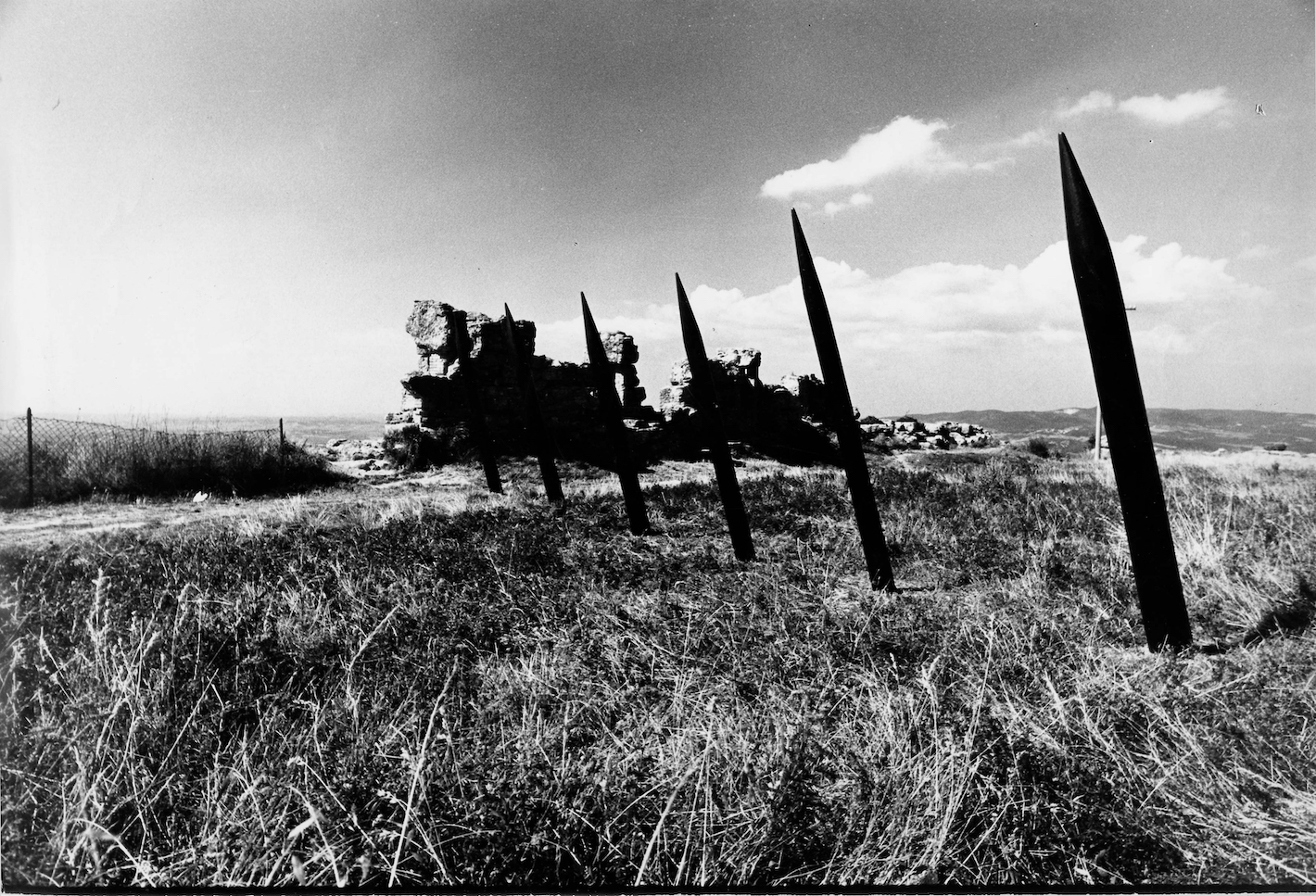Loris Cecchini (interactive: Alberto Chiusoli)
Waterbones (SCRNSAVE project), 2020
HD digital animation, 1’30’’
© Loris Cecchini 2020
Courtesy Loris Cecchini Studio
Loris Cecchini’s research reflects on the concept of ‘organism’ meant as a perennially evolving, self-generating system, building its growth beginning with a module, as happens in architecture.
During his activity Staccioli repeated specific geometric shapes (circles, squares, cones, parallelepipeds…), placing them in particular natural or urban spaces so that they would become their characteristic features. At the same time, in Waterbones (SCRNSAVE project) Cecchini repeats a shape that recurs often in his work, to characterize a space that is no longer physical but completely digital.
In so doing, he also borrows from digital language, making a video in the form of a screensaver, in which the minimal white shape multiplies against a black background, starting from this first module to build its systemic and exponential growth.
The screensaver, as such, deceives our perception. It gives us the illusion that we are looking at spatial depth and the construction of a three-dimensional and infinite image, yet it remains blocked in the limited and two-dimensional space of the screen.
“The idea to make the work a screensaver comes from the relationship with the purely virtualized space of the screen, a technical moment when the computer apparently goes into rest mode. In the machine’s tendentially linear use, it becomes a more or less lengthy moment in a certain period of time when the computer takes a break, cuts off almost, when, somehow, it ‘thinks about something else’. The idea of the module’s germinal growth and its expansion and contraction in the space of the screen refers to the capacity of the formal process to self-generate, as happens in the more specifically physical sphere of some of my works: parametric functions set out a series of dimensional, quantitative elements to manage the shapes; if you act on these numbers, a virtually endless amount of alternatives can be generated from a shape or basic idea.
I discovered this visible concept of ‘processes’ a few years ago, but in a completely analogical way, while I was working physically on modular sculptures. I was trying to free a certain idea of sculptural mass and to make it act spatially by causing it to fragment: the freedom of plants and more generally the aggregation phenomena of cellular organisms have provided me with examples in my attempt to establish a different kind of spatial relationship, in a formal/linguistic strategy that on one hand is very much bound to the context and on the other is completely free from references, with an autonomy in its semantic function. It’s an attitude that relates to a certain minimalism and processual art. At the same time, however, it makes some references to a certain Baroque, which in the same way deemed the rediscovery of nature and of space as a mental and biological element to be a mode of expression that was perfectly coherent with a sense of structural wonder.” (Loris Cecchini)
Loris Cecchini (1969) lives and works in Milan.
He has held prestigious solo exhibitions at, among others: Palais de Tokyo, Paris; Musée d’Art Moderne de Saint-Étienne Métropole, Saint-Priest-en-Jarez; MoMA PS1, New York; Shanghai Duolun MoMA, Shanghai; Centro Galego de Arte Contemporánea, Santiago de Compostela; Kunstverein, Heidelberg; Centro per l’Arte Contemporanea Luigi Pecci, Prato and Fondazione Arnaldo Pomodoro, Milan.
He has taken part in important international exhibitions, including the 56th, 51st and 49th Venice Biennale; the 6th and 9th Shanghai Biennale; the 15th and 13th Rome Quadriennale; the Taiwan Biennale in Taipei; the Valencia Biennale and the 8th Shenzhen Biennale of Urbanism/Architecture.
He has taken part in numerous group exhibitions at, among others: Museum Ludwig, Cologne; PAC, Milan; Palazzo Fortuny, Venice; Mart, Rovereto; The Garage Museum of Contemporary Art, Moscow; Musée d’Art Contemporain, Lyon; MoCA, Shanghai and Deutsche Bank Kunsthalle, Berlin.
He has made permanent site-specific installations, in particular at Villa Celle (Pistoia), in the courtyard of Palazzo Strozzi (Florence), at the Boghossian Foundation (Brussels), at the Cleveland Clinic’s Arts & Medicine Institute (USA), at Les Terrasses Du Port (Marseilles), at Shinsegae in the Hanam Starfield (Seoul) and at the Cornell Tech Building (New York).
Website: www.loriscecchini.org
in dialogue with Mauro Staccioli, Volterra, 1972
Photo by E. Cattaneo



